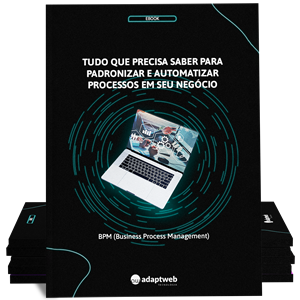Ensure that you take into account all the deposits as well as the withdrawals posted to an account in order to prepare the bank reconciliation statement. To reconcile your bank statement with your cash book, you need to ensure that the cash book is complete. Further, make sure that the bank’s statement for the current month has also been obtained from the bank. However, there may be a situation where the bank credits your business account only when the cheques are actually realised. The above case presents preparing a bank reconciliation statement starting with positive bank balances.
- This is a time-saving feature that can benefit any business user.
- First, let’s undo your reconciled statement by manually unreconciling each transaction.
- We’ll dive in to free options and low-cost options and their features, just in case you’re not satisfied.
- The goal is to have a zero difference between your statement and QuickBooks Online by the end of the process, at which point you can select Finish now.
- We know that taking hours to find amounts that are off by a few pennies doesn’t make sense.
If you forgot to enter an opening balance and you’re already tracking transactions in the account, here’s how to enter an opening balance later on. Use this guide anytime you need help doing or fixing a reconciliation. If you’re new to reconciliations or need more help, reach out to your accountant. This can get tricky and they know how to handle the next steps. Match each transaction listed in your bank statement with those in QuickBooks Desktop. In the Reconciliation window of QuickBooks Desktop, mark off each transaction that aligns with your bank statement.
Step 1: Examine your opening balance
We recommend reconciling your current, savings, and credit card accounts every month. Check out our complete reconciliation guide to understand the full workflow. If there are transactions from the previous month that are cleared in this month, you have to reconcile them in the social security tax rates current month’s reconciliation. By doing this, you can ensure that your financial records are accurate and that the balances in your bank account and QuickBooks Online (QBO) match. If you would like to streamline your reconciliation process in QuickBooks, Synder is the answer.
- It also affects the beginning balance of your next reconciliation.
- For other types of accounts, QuickBooks opens the Make Payment window.
- Such a time lag is responsible for the differences that arise in your cash book balance and your passbook balance.
Once the journal entries are recorded, the general ledger is prepared. At times, your business entity may omit or record incorrect transactions for cheques issued, cheques deposited, the wrong total, etc. At times, the balance as per the cash book and passbook may differ due to an error committed by either bank or an error in the cash book of your company. As a result of such direct payments made by the bank on your behalf, the balance as per the passbook would be less than the balance as per the cash book.
Example 1: Preparation of Bank Reconciliation Statement Without Adjusting the cash book Balance
This happens due to the time lag between when your business deposits cash or a cheque into its bank account and when your bank credits the same. In addition to ensuring correct cash records, the bank reconciliation process also helps in keeping track of the occurrence of any form of fraud. Such insights would help you as a business to control cash receipts and payments in a better way. Once you have your monthly bank statements, you can reconcile your accounts.
Edit completed reconciliations
Alternatively, if you want to access and review reconciliation reports without going through the reconciliation screen, you can navigate to the Reports tab in QuickBooks. Locate “Reconciliation Reports” in the report center, and QuickBooks will take you to the History by account screen. Here, you can track reconciliation history and access reports at any time. The top of the report will display summary information similar to the top of the reconciliation screen.
fixing balances
If you reconciled the account successfully in the prior month, yet your beginning balance doesn’t match your bank statement, then a previously cleared transaction has changed. QuickBooks will provide a link on the screen where you input the statement summary to help you find the changed transaction. When reconciling an account, the first bit of information you need is the opening balance. If you choose to connect your bank and credit cards to your online account, QuickBooks will automatically bring over transactions and also the opening balance for you.
Match your transactions
With bank statement in-hand, you can systematically check off matching transactions one-by-one by clicking their boxes. The bottom of the screen contains a running total of items you have checked off, and thus have been reconciled. This is useful for comparing the totals in your books to the totals on your bank statement. To complete the reconciliation, make sure the difference shown is zero. Connect QuickBooks to your bank, credit cards, PayPal, Square, and more1 and we’ll import your transactions for you.
Just like balancing your checkbook, you need to review your accounts in QuickBooks to make sure they match your real-life bank and credit card statements. The very purpose of reconciling bank statements with your business’s cash book is to ensure that the balance as per the passbook matches the balance as per the cash book. All deposits and withdrawals undertaken by the customer are recorded both by the bank as well as the customer.
It involves comparing two sets of records to ensure they are in agreement and accurate. In the context of QuickBooks, reconciliation typically refers to matching the transactions recorded in the software with external financial statements, such as bank and credit card statements. This process is vital in verifying that the records in QuickBooks accurately reflect a business’s financial transactions. Reconciling a bank statement is an important step to ensuring the accuracy of your financial data.









